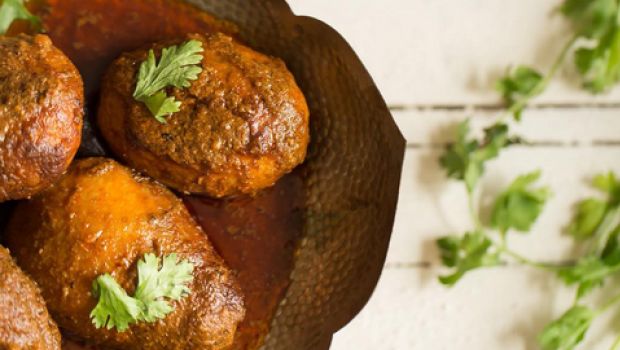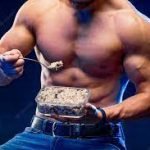

It is somewhat ironical that in this day of celebrity chefdom, khansamas, the original traditional professional cooks or chefs in many parts of the country, should have so totally disappeared. But this disappearance is perhaps inevitable. The khansamas were a product of a feudal India, of the British Raj, and while their legacy lived on for many decades post-Independence, and post the abolition of the privy purses which dealt a death blow to feudalism in many ways, in the post Liberalisation world, it was inevitable that this legacy would wane which is a pity because these were no ordinary cooks. They were master chefs who, despite being professionally untrained, cooked with an instinct for flavours and spicing that cannot be taught to students of Indian gastronomy.
Most of us who grew up at the cusp of Liberalisation can perhaps recall the last of the khansamas from old clubs in old cities. Some of us may even have been privileged to be part of extended families of some affluence and influence who employed these professional cooks. But how did the institution of the khansama-in the erstwhile dak bunglows, bureaucratic homes, Railways catering, army messes and elite clubs come about?
Much of it can be traced to Avadh – that glittering center piece of cultural and culinary evolution in the post-Mughal times. Abdul Halim Sharar (1860-1926), the best known chronicler of the lifestyle and culture of Avadh writes extensively about the Nawabi preoccupation with food and the exalted status enjoyed by cooks in their kitchens.
In Guzishta Lucknow, the finest narrative describing the Lucknow of the past, Sharar not only talks about the splendours produced in the Nawabi kitchens-Rs 60,000 a month were spent on food apart from salaries of various cooks-where cuisine was raised to the form of art, but he also talks about the categories of cooks. While a bawarchi was an ordinary cook, cooking in bulk (that legacy has survived till today and you have bawarchis cooking up biryani, curries or working the tandoor for big fat Indian weddings), his profession was looked down upon by elite Lucknowwallahs
as being commonplace. Rakabdars, on the other hand, were the true master chefs, and highly regarded.
They only cooked small portions of food for the main aristocrats (and not the entire household) and devoted their time to refining dishes, developing preserves, procuring the best ingredients and artistically decorating plates! Somewhat like the head chef in a modern restaurant kitchen that runs on the French model. Instead of following a recipe, Rakabdars were instinctive geniuses who created novel dishes out of existing ingredients-a dry fruit only khichdi without dal and chawal, sliced aubergines, delicately spiced, put on trees, murabbas, rich desserts, you get the drift.
Since cuisine was entertainment and the entire culture favoured hyperbole and elaborate manners (as has been often caricatured), nazakat and nafasat – delicacy and elegance– were equally prized in the culinary arts too. Thus we have the legacy of paans fashioned out of just malai, pulaos rather than robust biryanis and aromats in minute quantities to rev up kebab and kormas as well as paheli ka khana
— to trick your senses-much before the age of Heston Blumenthal.
After the Revolt of 1857, when the last Nawab of Avadh Wajid Ali Shah was exiled to Kolkata, capital of the British Raj, hundreds of cooks employed in the extended household traveled east with him. These were cooks of all categories. Some of them or their progeny, it is conjectured, found employment with the British clubs and in the homes of the memsahibs, some turned bazaar chefs, but all of them, no doubt, contributed to the inventive cuisine that we know today-aloo dum, mochar
chops, Calcutta biryani which is a take on the avadhi biryani and, well, smoked hilsa, that ultimate aspirational dish. The khansamas were inventing a whole new genre of food with newer influences married to local ingredients and spicing.
Before we talk further about the khansamas and their influence on Indian gastronomy, a peep into the legacy of another traditional Indian cook: the padayan. While the khansamas were at least originally muslim cooks proficient in old Mughalai khana
, employed by aristocrats, bureaucrats, landlords given to entertaining and in clubs and messes of British India, padayans were also professional cooks, only more homely and matronly.
Most ordinary high-caste Hindu homes in UP and large parts of the Gangetic heartland employed these Brahmin women to cook in their inner kitchens. Padayans would make everyday fare, slaving over the fire, turning out hot phulkas and paranthe, ghee-laden dals and seasonal vegetables and curries. This was every day fare but the padayan ruled the kitchen with an iron fist. Economy was maintained, no meat (in some regions, fish was not taboo) was allowed into this inner space governed by religious rituals of cooking and eating.
The khansamas, by contrast, cooked fare meant for entertaining. Their cooking then was naturally more inventive and eventually became the basis of restaurant/club cooking in India, though of course, over the years some of the dishes became part of the “party” fare in homes as well. If there is such a sharp divide between home-style, “regular” Indian food and what we eat outside, it is also because of these differences in cooks.
If the Rakabdars in Lucknow-and similar cooks in other princely states-excelled in turning out exotic dishes with expensive ingredients, khansamas of the British Raj employed in dak bungalows and clubs in the boondocks invented with what they had. Dak Bungalow curries and the like come nowhere close to the refinement of a korma but the khansamas were no rakabdars and their context had changed. Still, that same instinct for invention and experimentation survived. That is exactly what defines Indian cuisines even today – this melange of different influences on our tables.
[“source-food.ndtv”]




